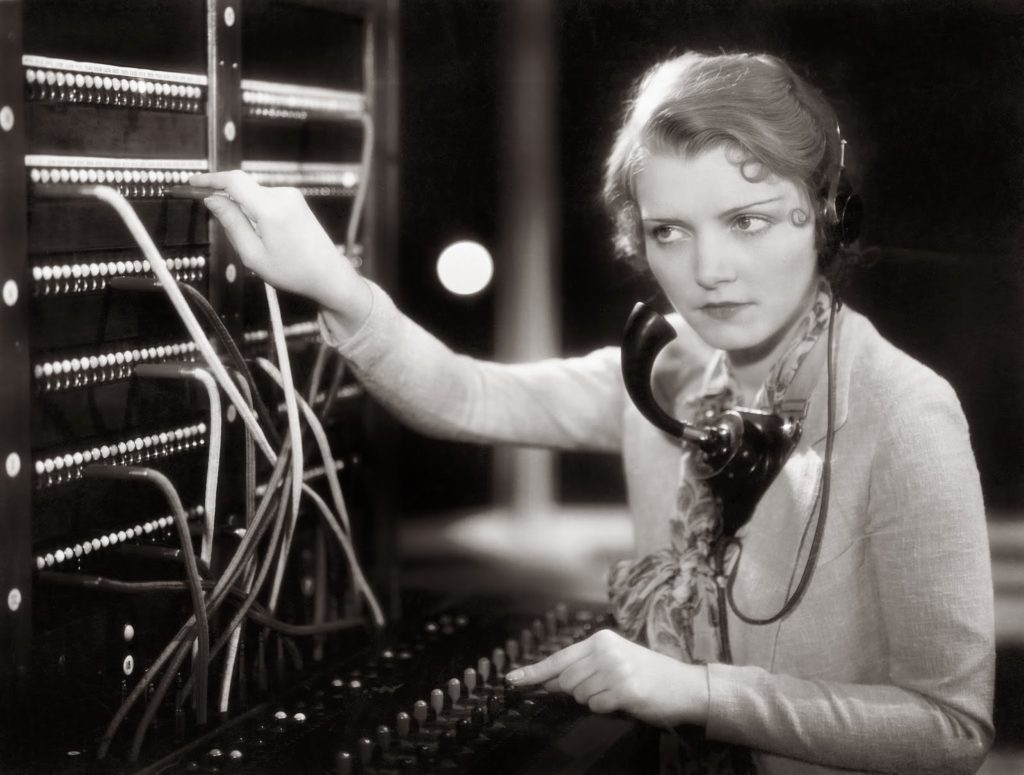There exists a chapter often overshadowed by the sleek gadgets of today’s digital age—the era of switchboard operators. These unsung heroes were the linchpins of connectivity in the pre-digital era, bridging distances and fostering communication in ways that laid the groundwork for our modern telecommunications landscape. While doing homework for a presentation for The Monitoring Association, we uncovered the fascinating history of switchboard operators and the technological innovations that shaped their world – and led to the modern monitoring center agents who protect our families every day.
The Birth of Connectivity:
Our story begins in the late 19th century, a time when the world was on the cusp of a communication revolution. Alexander Graham Bell’s invention of the telephone had sparked a newfound desire to connect people across vast distances. However, early telephone systems relied on manual intervention to establish connections. Enter the switchboard operator—a pivotal figure tasked with physically plugging and unplugging cables to route calls.
The Rise of the Switchboard Operator:
As telephone networks expanded, so too did the demand for switchboard operators. These men and women worked tirelessly, often in crowded and bustling telephone exchanges, to ensure that every call found its intended recipient. With lightning-fast reflexes and sharp attention to detail, they became the backbone of communication networks worldwide, earning a reputation for their efficiency and reliability.
The Strowger Switch Revolution:
In 1889, a pivotal moment in telecommunications history occurred with the invention of the Strowger switch by Almon Brown Strowger, a Kansas City undertaker. This revolutionary device automated the process of call routing, eliminating the need for manual intervention by switchboard operators. Instead of relying on human operators to connect calls, the Strowger switch used electromechanical mechanisms to route calls based on the dialing of telephone numbers—a breakthrough that paved the way for the modern automated telephone exchange.
Fascinating Facts and Figures:
- Did you know? The term “hello” as a greeting gained popularity thanks in part to Thomas Edison, who advocated for its use when answering the telephone.
- Switchboard operators were often privy to confidential or sensitive information, leading to the popular saying “loose lips sink ships” during wartime, emphasizing the importance of discretion and confidentiality.
- In the early days of switchboard operations, operators were predominantly women. This trend continued well into the 20th century, with women comprising a significant portion of the telecommunications workforce.
Legacy and Evolution:
While the advent of automated switching systems gradually diminished the need for manual switchboard operators, their legacy lives on in the fabric of modern telecommunications. Their dedication, precision, and knack for problem-solving laid the groundwork for today’s interconnected world. Moreover, the integration of the Strowger switch marked a pivotal moment in the evolution of communication technology, demonstrating the power of innovation to transform the way we connect with one another.
As we reflect on the history of switchboard operators and the integration of the Strowger switch, let us pay tribute to the men and women who played a pivotal role in shaping the way we communicate. Theirs is a story of ingenuity, perseverance, and the timeless quest to bridge distances and forge connections. While the switchboard may be a relic of the past, the spirit of connectivity it embodied continues to resonate in our interconnected world today.
